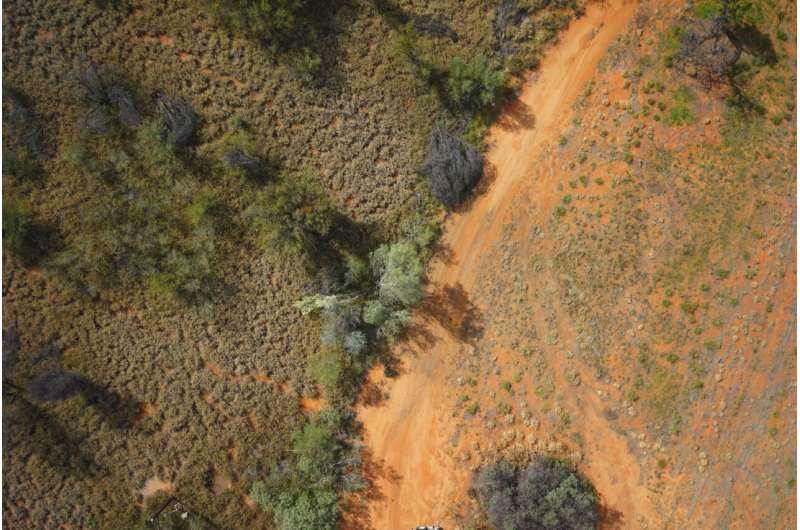This article has been reviewed according to Science X's editorial process and policies. Editors have highlighted the following attributes while ensuring the content's credibility:
fact-checked
peer-reviewed publication
trusted source
proofread
Australian research reveals diet of endangered northern hairy-nosed wombat

Researchers from Western Sydney University have uncovered the secret eating habits of one of the world's most endangered animals.
Associate Professor Julie Old, from the School of Science, and Master of Research student Fiona Casey have delved into the diet of the native and critically endangered northern hairy-nosed wombat.
The largest of the three wombat species, there is estimated to be about 350–400 of the breed, based upon expected growth rates.
The study, published in Ecology and Evolution, saw the researchers investigate what vegetation the species was consuming.
"The study aimed to determine what plant species the wombat is eating, how the diet differs between locations and seasons, and how much buffel grass (Cenchrus ciliaris) is being consumed as it outcompetes native grasses," said Ms Casey.
"The most recent assessment was completed over two decades ago and by using DNA metabarcoding, which is more specific and faster than traditional histological studies, we were able to process a greater number of samples within a shorter amount of time."
Wombat scat samples were collected from the Epping Forest National Park and Richard Underwood Nature Refuge in Queensland, between winter 2020 to spring 2021 to inform the study.
Associate Professor Old said the project found that the diet varied significantly seasonally and between the sites, but that there was a common component.
"The wombats were mainly eating grasses and some legumes but buffel grass which is invasive has increased in the habitats regardless of the location and season, as it dominates over the native grasses causing them to reduce," said Associate Professor Old.
"The findings of the study will support population and habitat management so we can improve the conditions for the wombats and also assist in locating additional sites suitable for translocation."
A new, third site has been identified at Powrunna State Forest which will be utilized for translocation in 2024.
The Wombat Foundation Director, Josey Sharred said that analyzing the "rare, square poos" has been a vital step in cementing the wombat's survival.
"Each valuable nugget contains information key to their future survival," said Ms Sharred.
"We now know more about what they need, not only to survive but thrive in their new home."
The research was conducted in collaboration with the Queensland Department of Environment and Science, and Dr. Hayley Stannard from Charles Sturt University.
More information: Fiona Casey et al, Assessment of the diet of the critically endangered northern hairy‐nosed wombat (Lasiorhinus krefftii) using DNA metabarcoding, Ecology and Evolution (2023). DOI: 10.1002/ece3.10469
Journal information: Ecology and Evolution
Provided by Western Sydney University


















